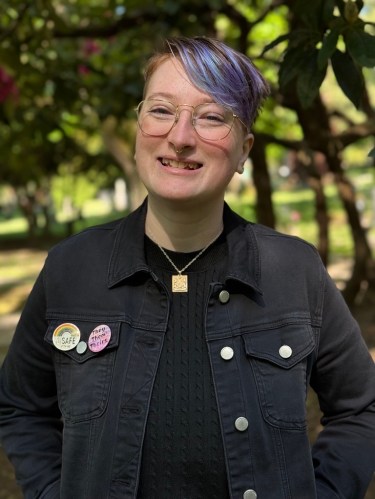
What are your favorite clients to work with (populations of special interest)?
My favorite clients to work with are couples, families, teens, adults, and end-of-life clients. I especially enjoy working with LGBTQIA+ and BIPOC communities and those who have been historically underserved and underrepresented in the mental health community. I specialize in working with those who are dealing with life transitions, internal family conflicts, grief and loss, systematic barriers, loneliness, and social anxiety. I love working with those who are authentic, unapologetically themselves, and move from a place of passion for change.
What inspired you to enter the field of mental health?
I was inspired to become a professional counselor associate and future therapist from my own personal experience in therapy. When I was twelve, my father passed away and my mother encouraged me to / helped me attend therapy for support and guidance. Therapy not only helped me gain tools to better cope with my issues and work towards living my ideal life, but I was also inspired by the work my therapist and I did together. So much so that at the age of thirteen, I decided that I wanted to become a therapist and dedicate my life to making mental health more accessible and approachable for underserved communities.
What does it mean to you to heal, or be a healer/agent of healing?
The therapeutic journey clients and I embark on together is something I consider as sacred. To be invited into the experience of another and to be the person who walks alongside them as they work towards healing is an honor. To be given the opportunity to build that level of trust with another as they work towards addressing their concerns and connecting to their authentic selves is a beautiful thing to witness. Whenever one of my clients enters the therapeutic space and engages, allowing real change to take place, it offers what I consider to be the best ‘big-picture moment’ a therapist can experience and reminds me why this work matters. as therapists are very lucky to do the work that we do with clients.
What have you learned from your work / collaboration as a therapist working with individuals and communities?
Through my work as a therapist, I have learned that one of the most important aspects of therapy is simply being human in the room with our clients. Our presence and genuine curiosity can speak volumes. I am thankful that I have mentors and relationships in the mental health community because within these, I have been able to see through a variety of lenses. Therapy is a collaboration and relational, both inside the therapeutic space and when we are out connecting our communities. Whether we are working with individuals, couples, or families; we are developing a trusting relationship and exploring issues with a relational lens. After we create genuine, meaningful bonds with our clients, the integration of diverse therapeutic modalities comes easily. I’ve found that clients often prefer we meet them in their current reality before we start using our clinical language. Humanizing the therapy experience is one of my biggest focal points as a mental health provider.
What insurance(s) do you accept?
I accept Kaiser insurance for both couples/families, and individuals, Providence for individuals, and Blue Cross/Blue Shield for individuals.



